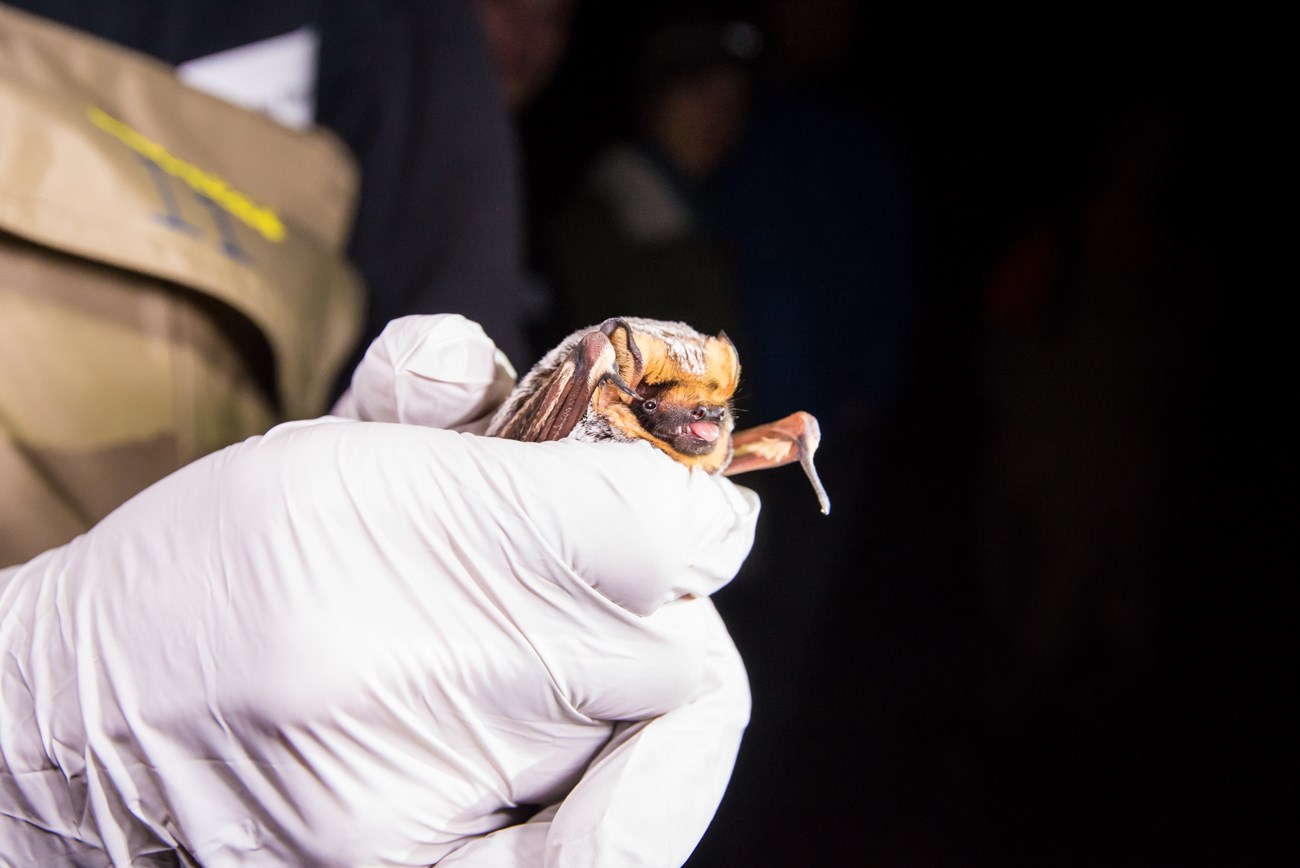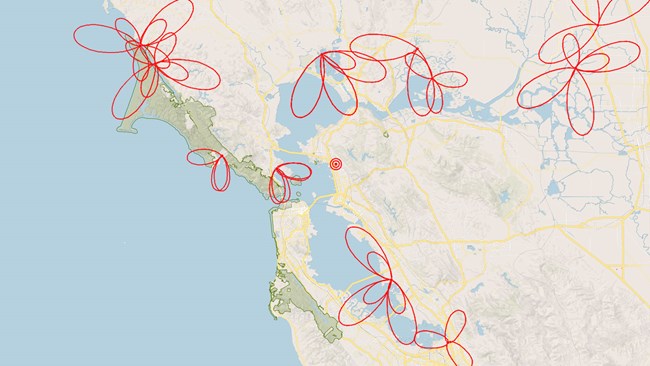Last updated: November 22, 2022
Article
Marin Bat Monitoring Team Starts Using Motus Tracking System to Study Migratory Species

NPS / Jessica Weinberg McClosky
October 2022 - A team of scientists led by One Tam and USGS has been learning about the mysterious lives of Marin County’s bats since 2017. Through acoustic monitoring, winter mist netting, and summer radio telemetry, they’ve started to describe species’ habitat preferences, roosting sites, and more. But there’s a whole other black hole of bat knowledge that they’re just now beginning to peer into: bat migrations. This fall, the team started leveraging an automated wildlife tracking system for the first time to better understand bats’ journeys as they migrate through—and beyond—Marin parks.

The Motus Wildlife Tracking System, a program of Birds Canada in partnership with wildlife research groups around the globe, has been growing for years. Groups deploy receiver antennas atop stationary towers, and then deploy tags on the wildlife they wish to track, from birds to butterflies. The towers record the tagged animals that pass by. The more towers that research groups deploy, the more precise tracking becomes for everyone. In 2021, Audubon Canyon Ranch deployed the first three Motus towers in Marin to help with their long term studies of shorebirds. Audubon California erected another this year at their Richardson Bay Sanctuary with help from members of the bat team. The National Park Service plans to erect three more towers in the near future.
The growing number of towers opened the doors for the bat team to plan its own Motus-based bat research. For starters, they’re focusing on migratory hoary bats. So far, they’ve tagged eight bats captured at Muir Woods, Point Reyes, and Samuel P. Taylor State Park. And already, those bats have been on the move. One tagged hoary bat from Muir Woods was detected in Colusa, California and then way up the coast in Tacoma, Washington! The team is hoping to deploy four more Motus tags this fall.
What the bat researchers learn will be important to improving hoary bat survival. The species is especially vulnerable during their long-distance migrations, which remain poorly understood. In particular, this species suffers high mortality from wind turbines. Understanding their migratory patterns is crucial for developing strategies for bat and wind energy coexistence.
For more informaiton
- Motus Wildlife Tracking System
- One Tam Bat Monitoring webpage
- USGS Bat Research in California webpage
- Pacific Coast Science and Learning Center Bats webpage
- Learn more about bat conservation in the San Francisco Bay Area
- Contact Wildlife Biologist Rachel Townsend
See more from the Bay Area Nature & Science Blog
